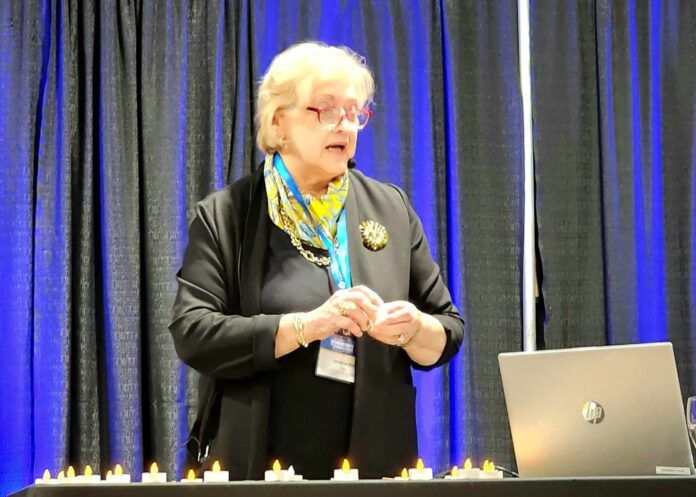Advisory: Topics covered in this story deal with Canada’s worst mass shooting. Readers are advised to seek support if they feel any anxiety from reading the subject matter.
When the unthinkable happens in any community, the level of preparation could very well influence the outcomes. This is what is being shared as people from a little community in Nova Scotia continue to live in the aftermath of Canada’s worst mass-shooting.
Mayor of Colchester County Christine Blair said they had an alert system, but had to get permission from the province of Nova Scotia to use it.
“We had to get permission from them (province of Nova Scotia) to use ours. And ours is a local system. It’s not something that would be province-wide. It just wasn’t used.”
The mass-shooting took place over April 18-19, 2020, while the world was on lockdown due to the COVID-19 pandemic.
Blair says she did not get news of what was going on overnight until a reporter called her home on the Sunday morning for reaction.
In the aftermath, 22-people died as a man disguised as an RCMP officer drove around in the sea-side hamlet of Portapique and shot people to death.
Three years on, while the Mass Casualty Commission released its report at the end of March, the community is still seeking healing as they try to live a new-normal, explains Blair.
“The lesson learned is to prepare for the unexpected. Things that are so remote that it would never occur to you that it would ever happen, anywhere and let alone anywhere in our province, let alone in a rural community of 100-people.”
Blair was speaking at this year’s Bordering on Disaster conference in Lloydminster. She lit 22 candles for the victims, as she called their names and observed a moment’s silence. She then lit one more candle to honour another victim who succumbed to suicide as he battled the feelings of loss after the incident.
Blair says their emergency preparedness plans speak about hurricanes, flooding, blizzards, chemical spills and train derailments, not a “deranged shooter.” She notes the perpetrator’s mental health and says the shooter had a list of names and then he shot people randomly.
Since the Portapique mass shooting, the use of emergency alerts has become more common place, as in the case of James Smith Cree Nation shootings in Saskatchewan of September 2022. In Alberta there are over 800 people who are trained to use the province’s emergency alert program and can issue alerts in real time for their communities as needed, explains an official with Alberta Emergency Management Agency.
The Mass Casualty report has 139 recommendations, an executive summary and seven volumes. Blair is currently on a committee tasked with ensuring that the report does not collect dust on a shelf.
Meanwhile, survivors have had to battle with shortcomings in the support that was offered. The province sent out cheques for $2500 to seek counselling services with a list of approved counsellors. However, when victims started calling, they were told by some of the services that they were not taking new clients.
In May of this year, Nova Scotia and the Federal government approved funding of $18 million to offer support to the three counties most affected in the mass-shootings.




